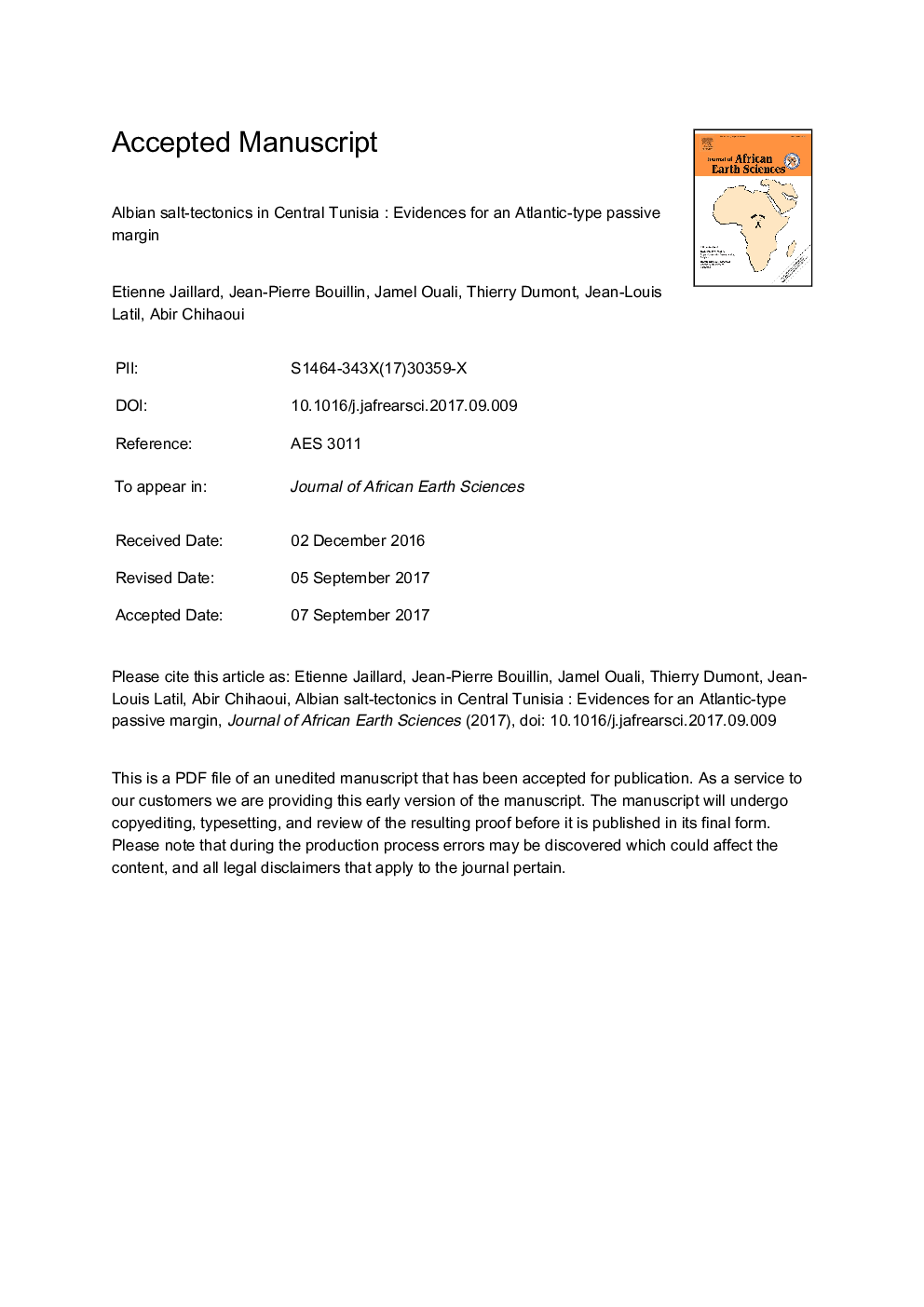| Article ID | Journal | Published Year | Pages | File Type |
|---|---|---|---|---|
| 5785517 | Journal of African Earth Sciences | 2017 | 38 Pages |
Abstract
Tunisia is part of the south-Tethyan margin, which comprises Triassic evaporites and a thick series of Jurassic and Cretaceous, mainly marine deposits, related to the Tethyan rifting evolution. A survey of various Cretaceous outcrops of central Tunisia (Kasserine-El Kef area), combined with literature descriptions, shows that the style of Albian deformation changes from the proximal (South) to the distal part (North) of the margin. The southern part is dominated by tilted blocks and growth faults, which evolve to the north to turtle-back and roll-over structures. Farther North, deformation is dominated by the extrusion of diapirs and salt walls. Such a distribution of deformation strongly suggests that the whole sedimentary cover glided northward on the Triassic evaporites during Albian times, as described for the Atlantic passive margin or for the Gulf of Mexico. Subsequently, these halokinetic structures have been folded during Alpine compressional tectonics.
Related Topics
Physical Sciences and Engineering
Earth and Planetary Sciences
Geology
Authors
Etienne Jaillard, Jean-Pierre Bouillin, Jamel Ouali, Thierry Dumont, Jean-Louis Latil, Abir Chihaoui,
